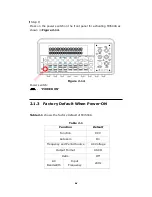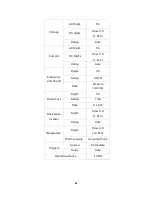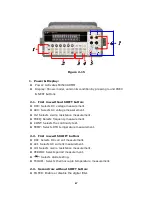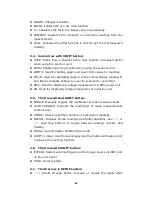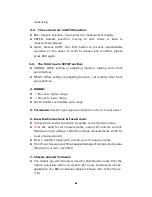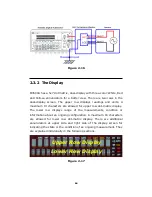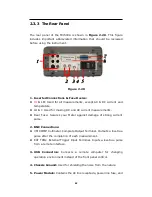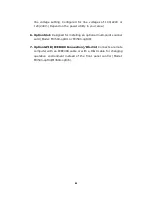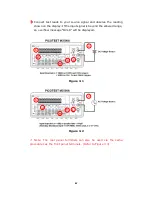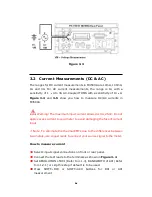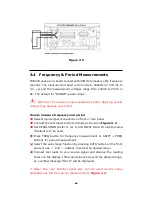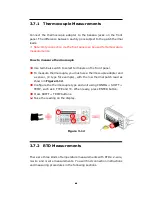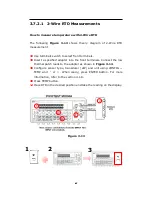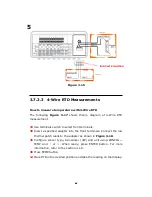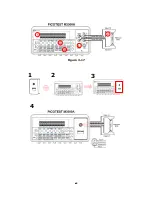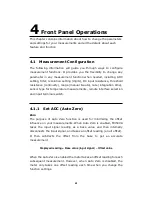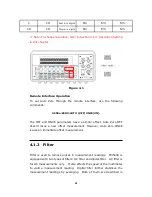
38
38
38
38
3.3 Resistance Measurements (2 & 4-wire)
The ranges for resistance measurement are 100 Ω, 1KΩ, 10kΩ, 100kΩ,
1MΩ, 10MΩ, and 100MΩ, with a sensitivity of 100 µΩ (on 100 Ω range.)
There are two modes for measuring the resistance: 2-wire mode as
shown in
Figure 3-6
and 4-wire mode as shown in
Figure 3-7
. With
4-wire mode, the test current is measured from the test resistance
through one pair of the test leads, and the test voltage across the
resistance under test is measured from another set of the test leads. As
a result, the 4-wire mode is more accurate for low resistance
measurements. The trade off is the longer settling time for 4-wire mode.
Figure 3-8
and
3-9
show the input terminal connections on the rear
panel for 2-wire mode and 4-wire mode respectively.
How to measure resistance
①
①
①
①
Selects input signal connections on front or rear panel.
②
②
②
②
Connect the test leads to the terminals as shown in
Figure 3-6
(2-wire) or
Figure 3-7
(4-wire).
③
③
③
③
Set RESOLUTION (Refer to 4.1.3) or skip this step if default is to be
used.
④
④
④
④
Press Ω2 button for 2-wire measurement or SHIFT + Ω2 buttons for
4-wire measurement.
⑤
⑤
⑤
⑤
Select the auto-range function by pressing AUTO button on the front
panel or use
△
and
▽
buttons to select the desired range.
⑥
⑥
⑥
⑥
Connect test leads to your source signal and observe the reading
shown on the display. If the input signal is greater than the allowed
range, an overflow message “OVLD” will be displayed.
Summary of Contents for M3500A
Page 1: ...PICOTEST M3500A 6 5 Digit Digital Multimeter User s Manual Version 1 06 ...
Page 2: ...2 2 2 2 M3500A DMM User s Manual ...
Page 49: ...49 49 49 49 Figure 3 17 1 2 3 5 5 4 4 1 2 3 ...
Page 50: ...50 50 50 50 Figure 3 18 5 ...
Page 191: ...191 191 191 191 FreeLibrary hUSBTMCLIB hUSBTMCLIB NULL return ...

